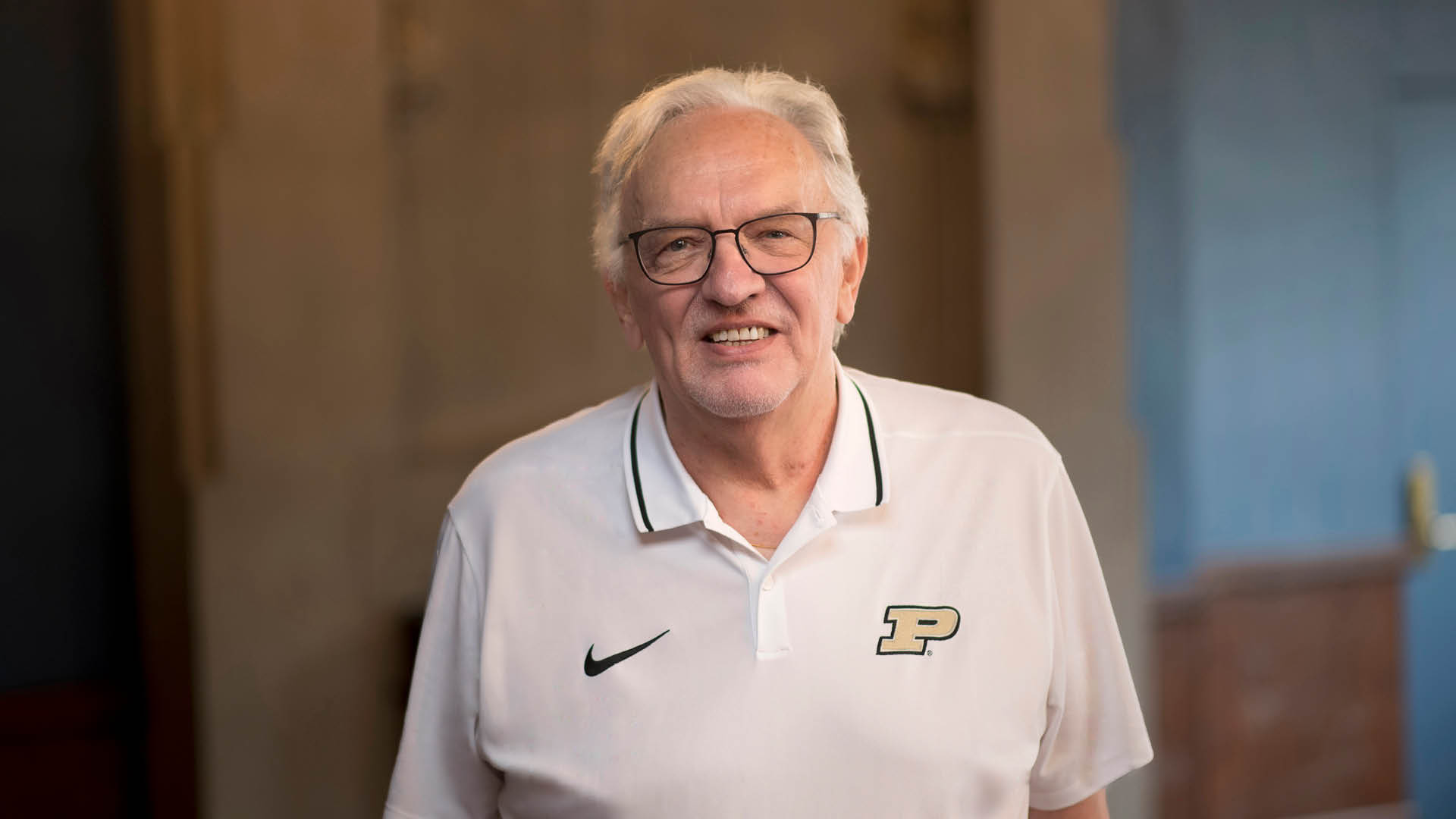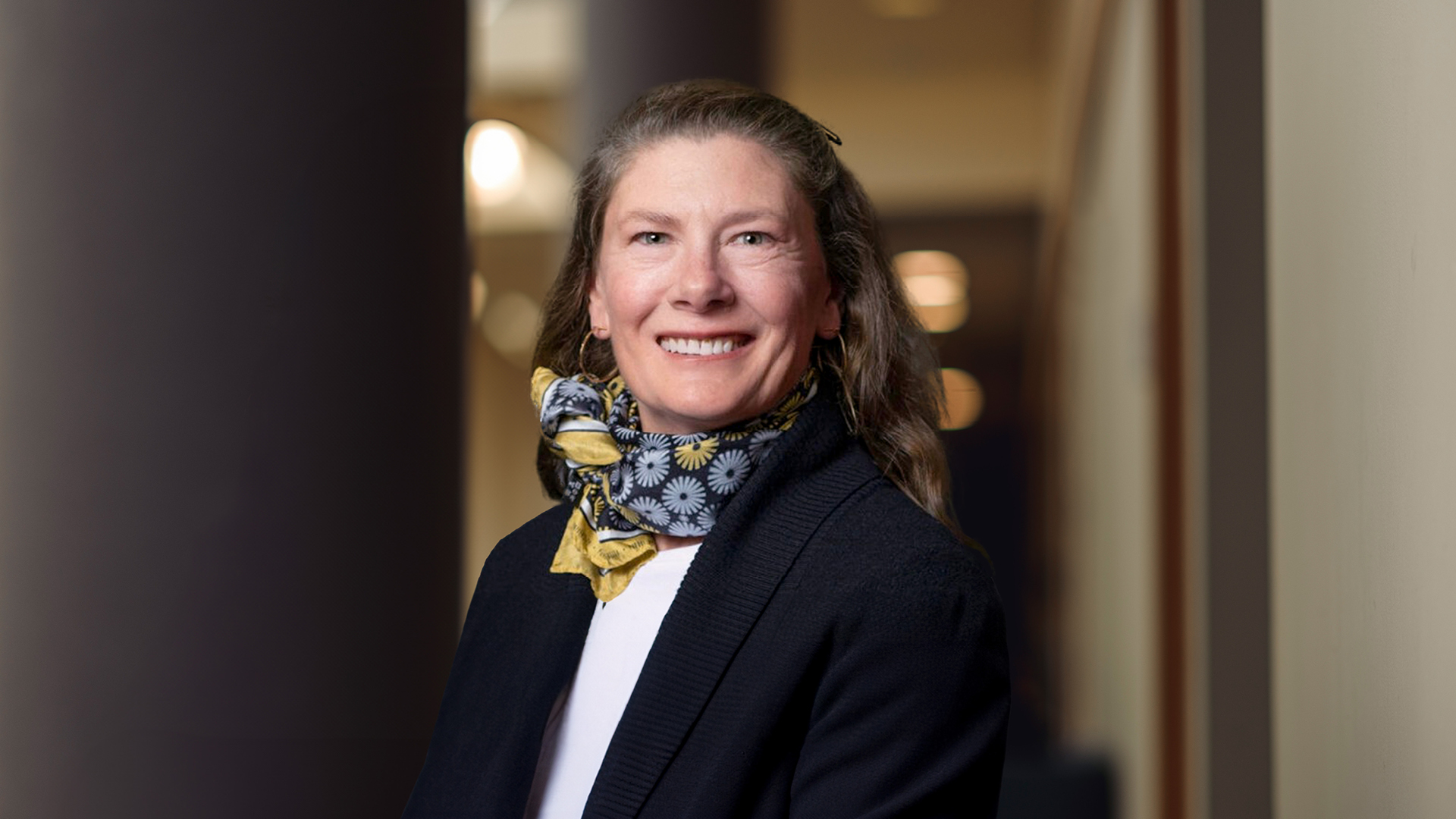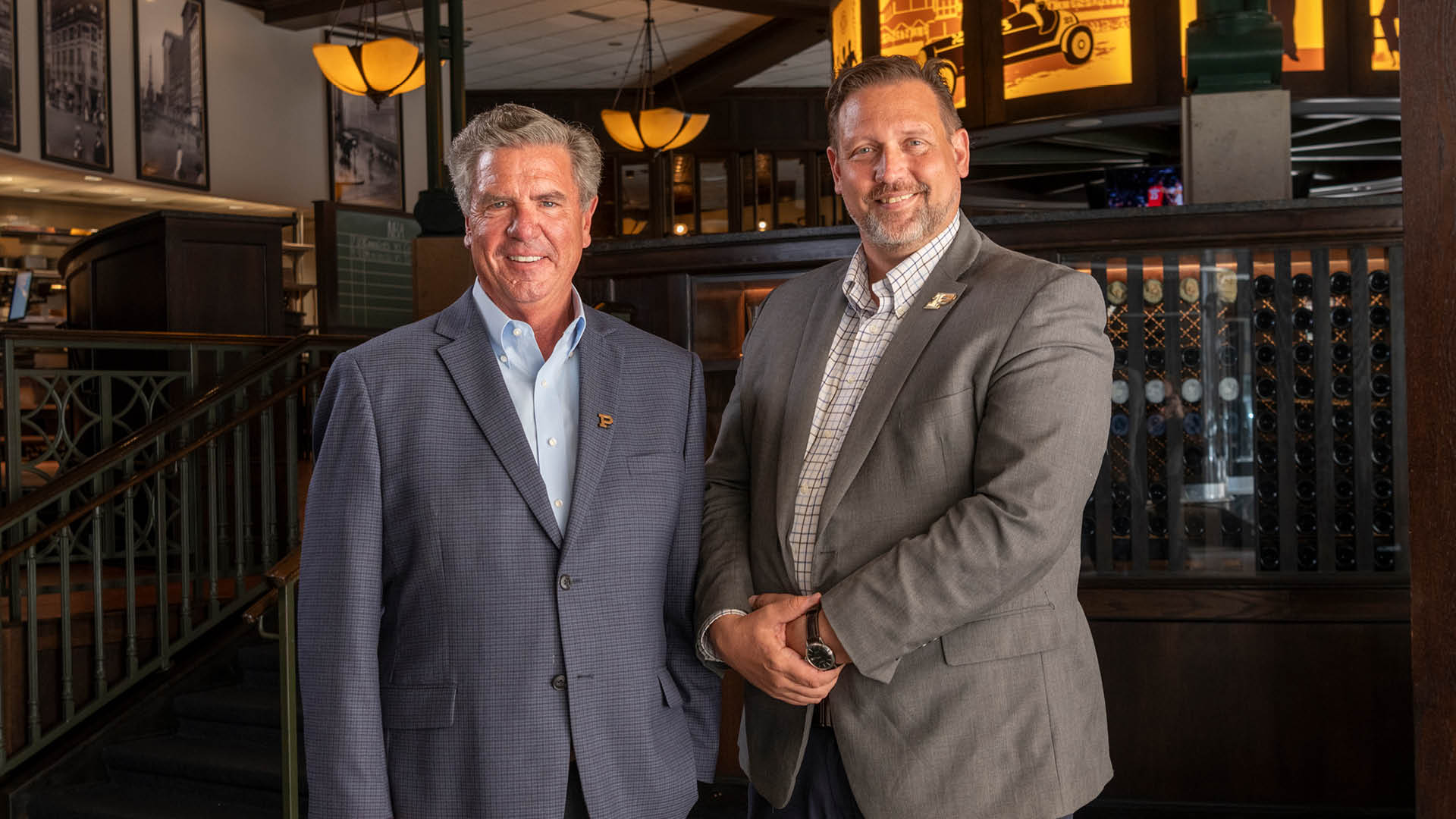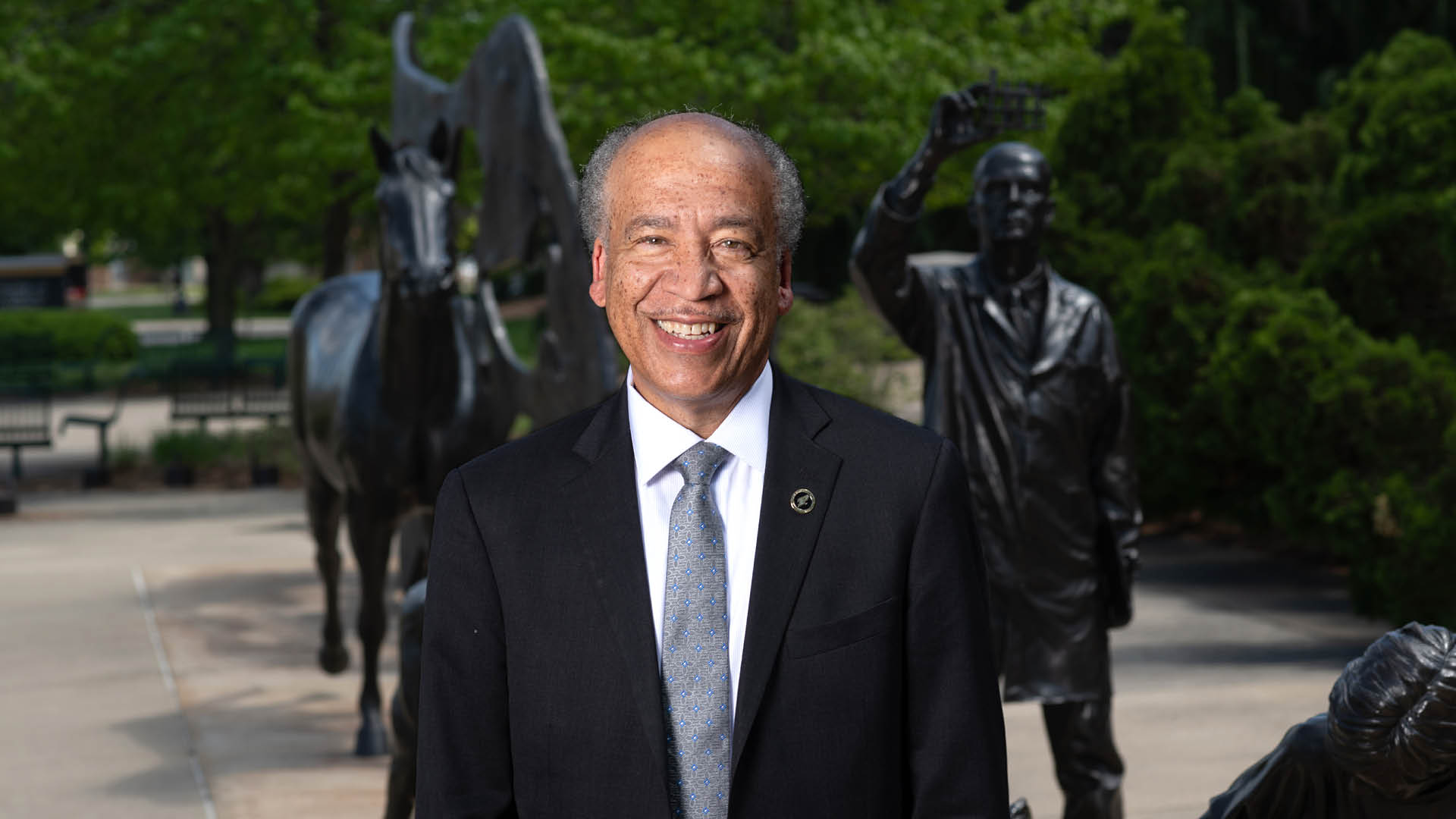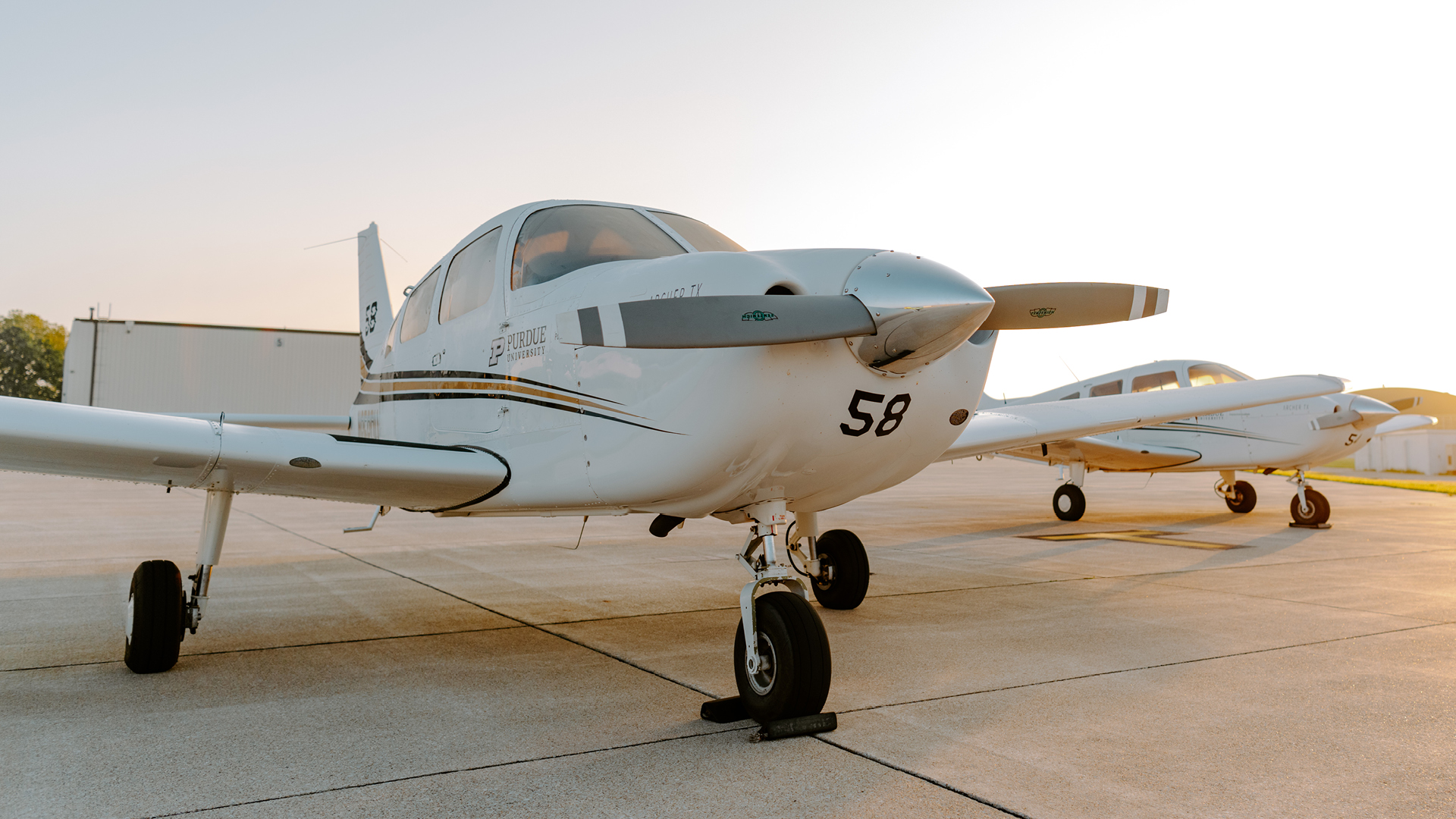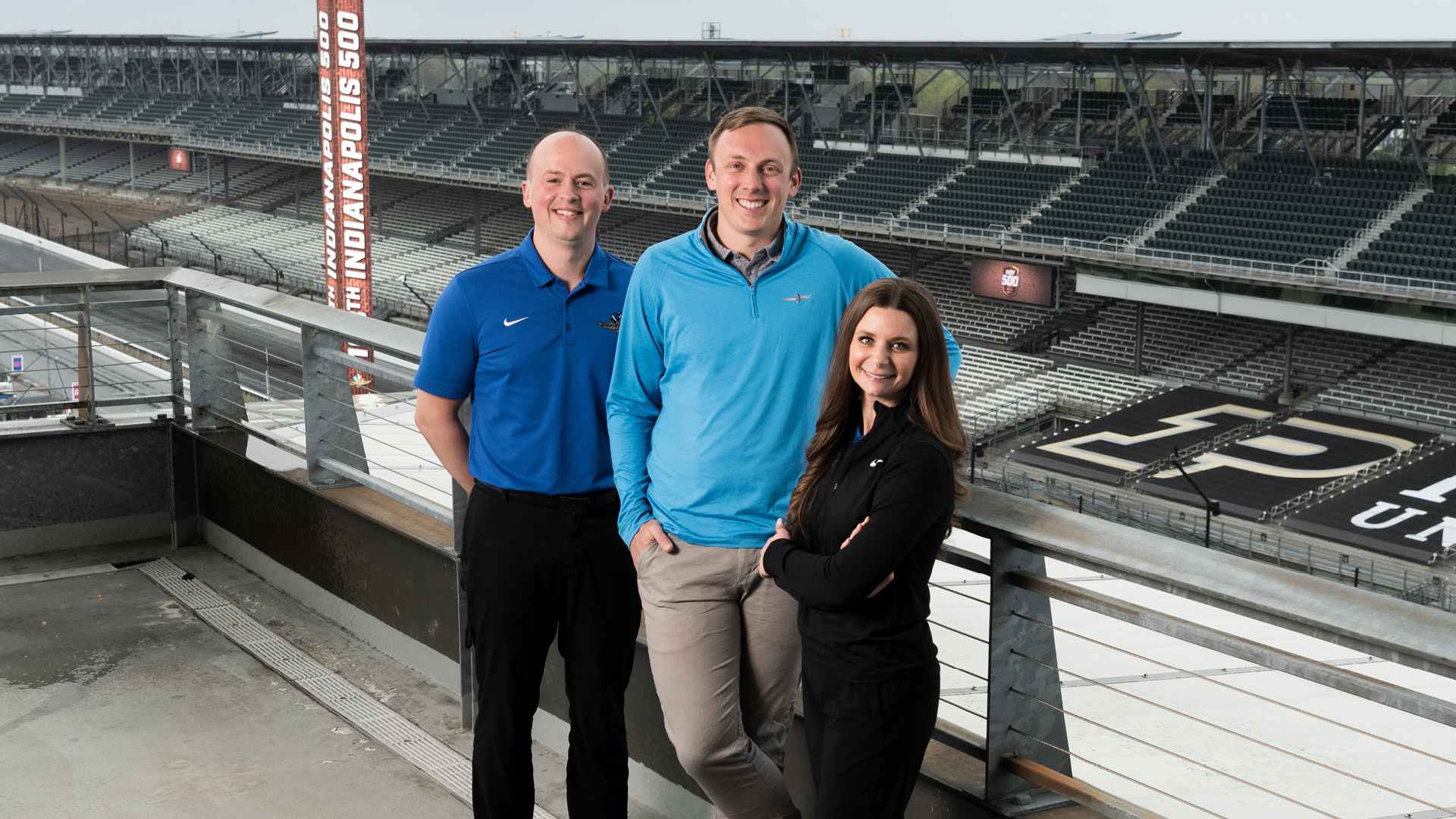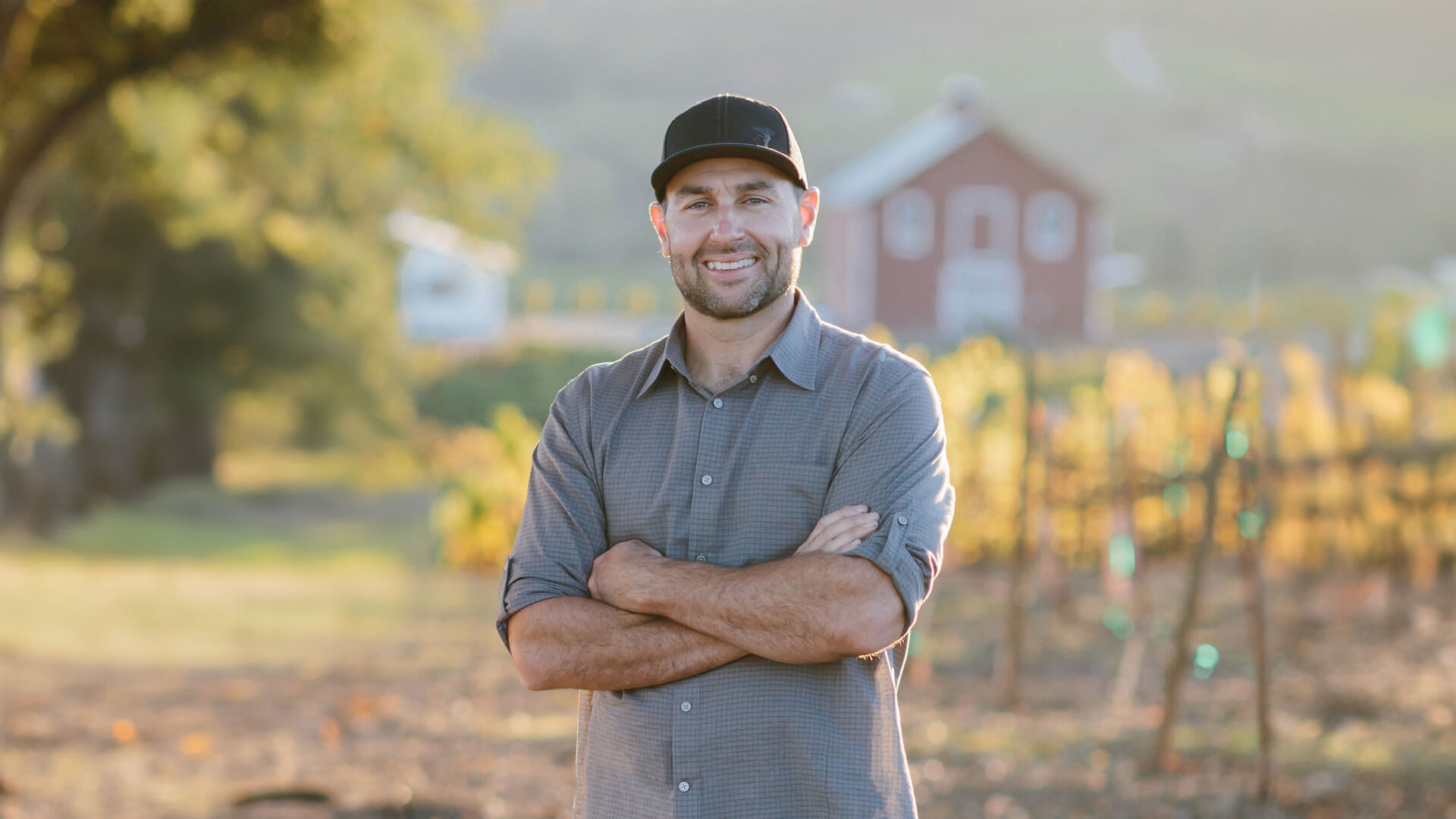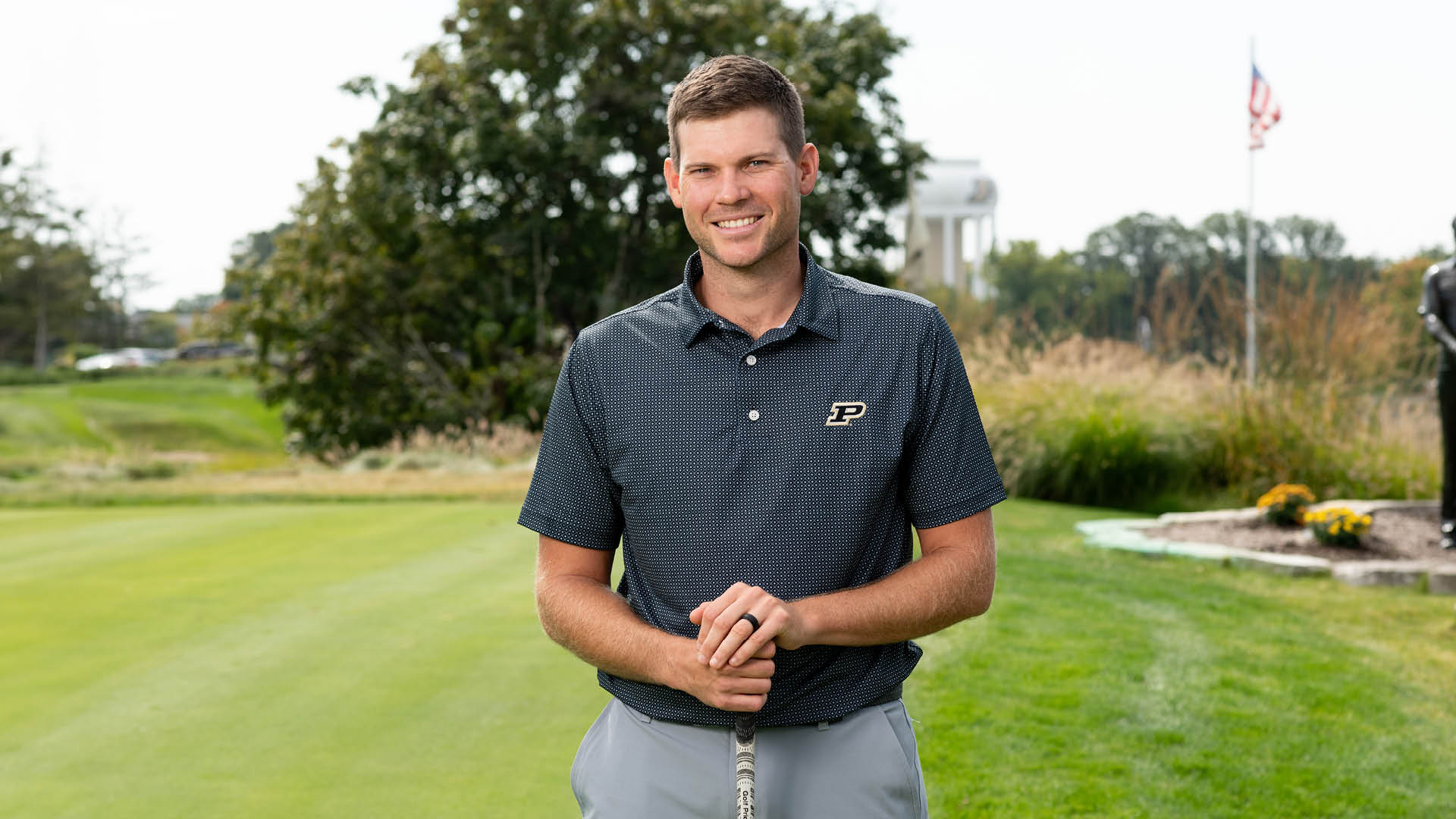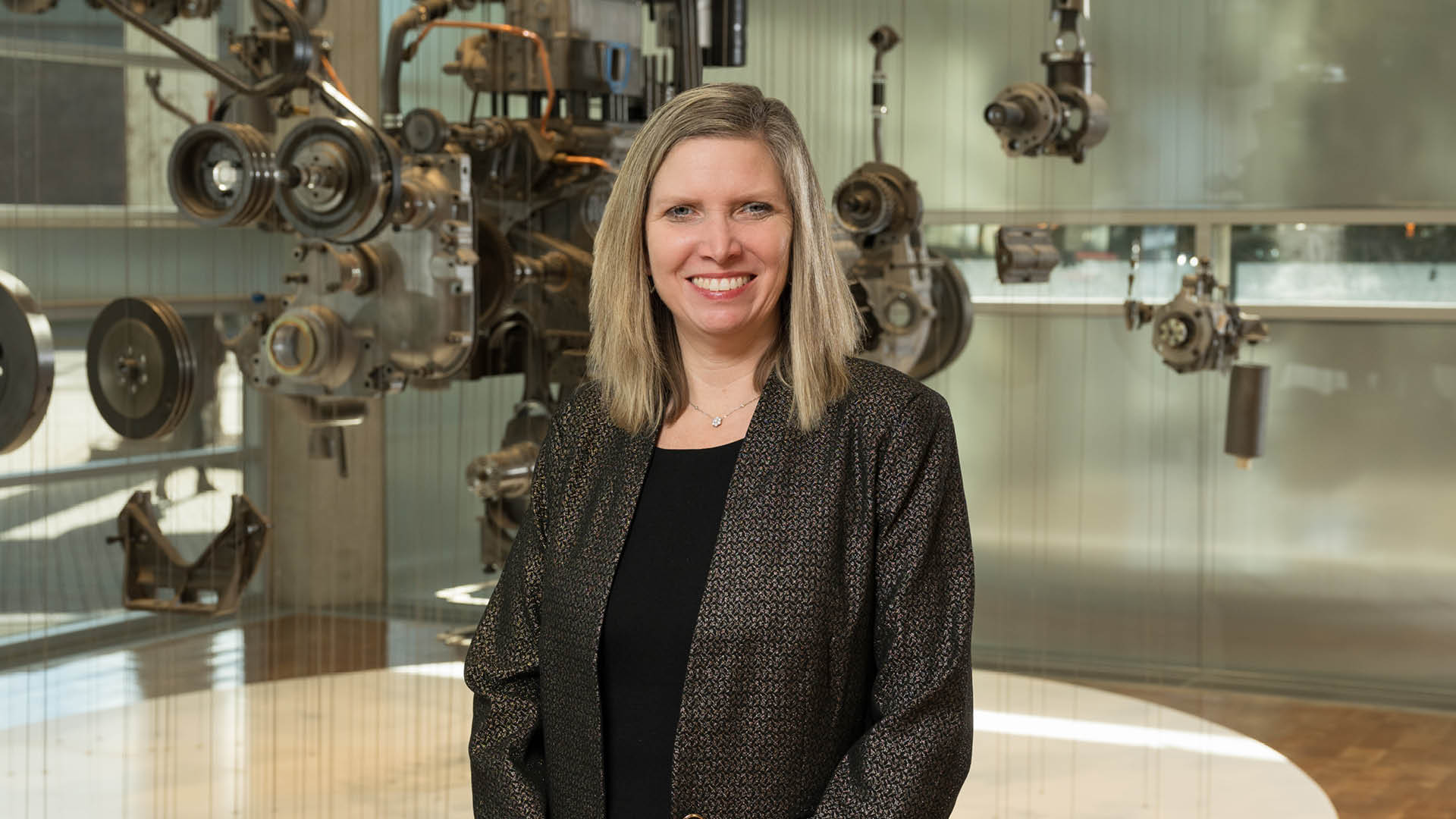Podcast Ep. 107: Astronaut Panel From the Total Solar Eclipse Event at IMS, Presented by Purdue University
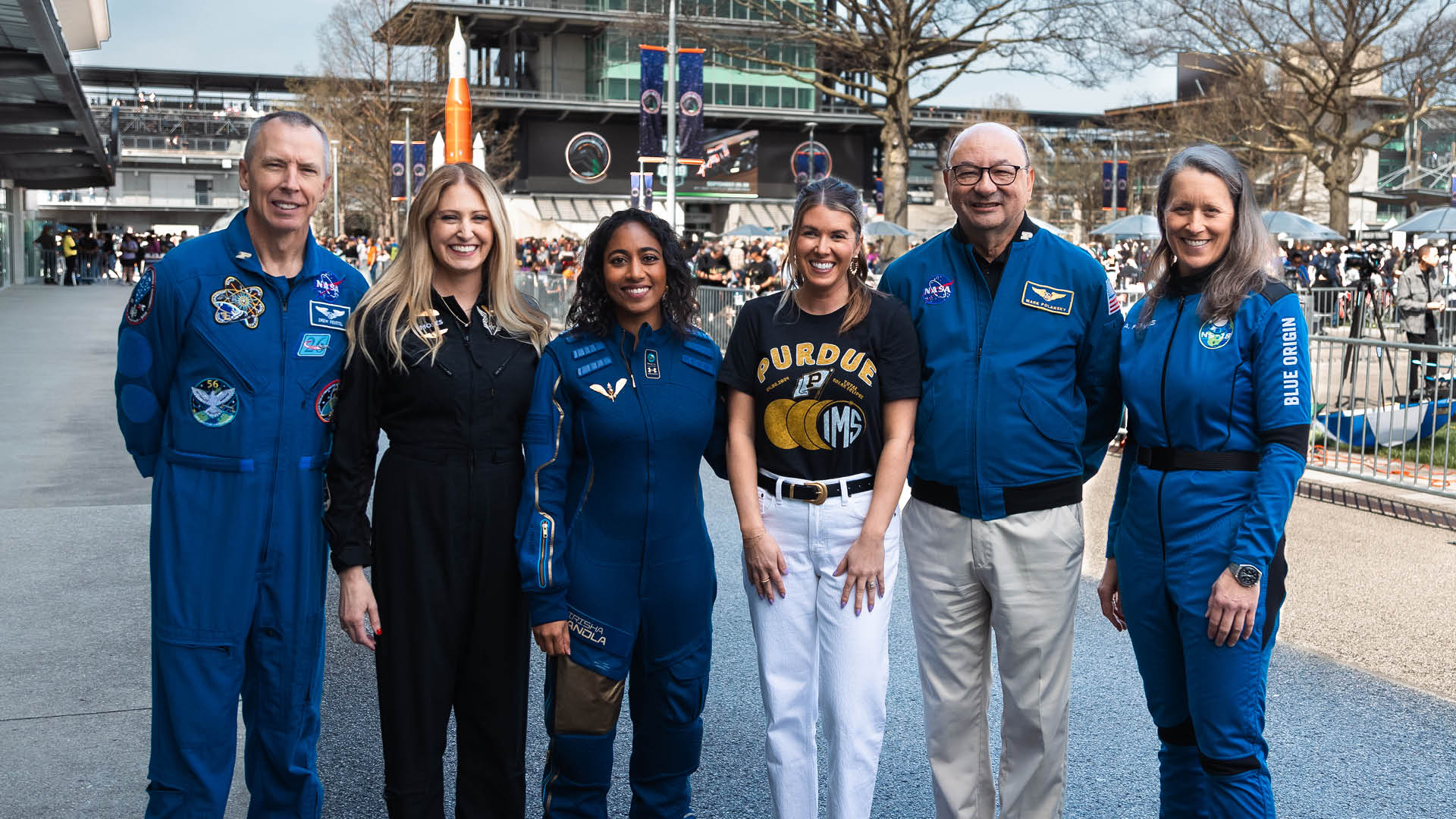
In this episode of “This Is Purdue,” we’re talking to five members of Purdue’s Cradle of Astronauts: Sirisha Bandla (BS aeronautical and astronautical engineering ’11), Drew Feustel (BS solid earth sciences ’89, MS geophysics ’91), Beth Moses (BS aeronautical and astronautical engineering ’92, MS aeronautics and astronautics ’94), Mark Polansky (BS aeronautical and astronautical engineering ’78, MS aeronautics and astronautics ’78) and Audrey Powers (BS aeronautical and astronautical engineering ’99).
These five Purdue astronauts came together for the first time at the live “This Is Purdue” podcast panel during the Indianapolis Motor Speedway’s Total Solar Eclipse Viewing Event, presented by Purdue University.
Listen as this panel of astronauts, which includes Boilermakers with both NASA and commercial spaceflight backgrounds at Virgin Galactic, Blue Origin and Barrios Technology, share what they found most surprising about their personal experiences in space, the specialness behind viewing a total solar eclipse with more than 50,000 people at the iconic IMS and their perspectives on where the future of spaceflight is heading.
Plus, you’ll hear how the journeys and legacies of past Boilermaker astronauts brought them to Purdue, how their passion for space exploration deepened as students and what it means to them to inspire the next generation to take the leap into space as future members of Purdue’s Cradle of Astronauts.
Check out this memorable episode — it’s only on “This Is Purdue,” the official Purdue University podcast!
Full Podcast Episode Transcript
Kate Young:
Hi, I’m Kate Young and you are listening to This Is Purdue, the official podcast for Purdue University. As a Purdue alum and Indiana native, I know firsthand about the family of students and professors who are in it together, persistently pursuing and relentlessly rethinking. Who are the next game changers, difference makers, ceiling breakers, innovators, who are these Boilermakers? Join me as we feature students, faculty and alumni taking small steps toward their giant leaps and inspiring others to do the same.
Audrey Powers:
We’ve all had the opportunity to meet an amazing number of people from here in Indiana and at Purdue, but people from other countries, folks who have come from far and wide to experience this event. And I think the feeling of unification and the fact that through no fault of our own, this perfection of the universe is going to be on display today and that we’re all just here able to witness it together.
Kate Young:
On Monday, April 8th, 2024, more than 50,000 guests from all 50 states and 35 countries around the world gathered at the Indianapolis Motor Speedway to look up at the greatest spectacle in the sky during the total solar eclipse viewing event presented by Purdue University in partnership with the IMS and NASA. And on this episode of This is Purdue, we’re featuring the podcast panel we recorded live at this special event. This wasn’t just any panel. For the first time ever, we brought together five members of Purdue’s Cradle of Astronauts, Sirisha Bandla, Drew Feustel, Beth Moses, Mark Polansky, and Audrey Powers. These five Boilermakers discussed a variety of topics in front of our in-person audience plus the thousands who live-streamed it via YouTube, including what they found most surprising about their time in space, their thoughts on the future of NASA and commercial spaceflight partnerships, what drew them to Purdue and the meaning behind viewing a total solar eclipse with thousands of spectators at the iconic IMS.
Okay, here’s a bit more background about this once in a lifetime event. Guests at the IMS were able to watch several in-person panel-led discussions like our this is Purdue panel, check out exhibits and experiments. And of course, experience the total solar eclipse that included breathtaking totality for more than three minutes that afternoon. This total solar eclipse viewing event garnered millions of social media impressions and interviews with every major national broadcast outlet with more than 300 media members from over 40 outlets in attendance. Plus, this event was designated as one of the several official broadcast sites for NASA TV’s eclipse coverage. Among the special guests were members of Indiana’s Congressional, Indiana Governor, Eric Holcomb, NASA deputy administrator, Pam Melroy, Purdue University President, Mung Chiang, and Mark and Rick Armstrong, the sons of Neil Armstrong. Everyone came together on this unique day to celebrate the first time in more than 800 years that a total solar eclipse has been visible in much of Indiana and we won’t see another total solar eclipse in Indianapolis until the year 2153.
Okay, and as most Boilermaker fans know, Monday, April 8th, 2024 was a unique day for one other big reason, our Purdue men’s basketball team was playing in the NCAA National Championship game for the first time since 1969, the same year Purdue alumni, Neil Armstrong walked on the moon. So you’ll hear us reference that special Boilermaker spirit for our men’s basketball team from time to time during this panel. April 8th, 2024 will certainly go down in Purdue history. Here is our live podcast panel with five members of Purdue’s Cradle of Astronauts. Hello, everyone. Thank you for coming. My name is Kate Young, I’m a proud Boilermaker alumna and the host of the This is Purdue podcast. And as everyone knows, it’s a super exciting day because of these five astronauts next to me, but there’s also a certain big game tonight. All right.
Okay, so I’m going to get started with the intros and then we’ll launch into our first question. Okay. First up, we have Sirisha Bandla. Sirisha is the vice President of government affairs and research operations at Virgin Galactic. Next up is Drew Feustel. Drew is a former NASA astronaut and he’s also a Purdue presidential ambassador. We’ll go to Beth Moses next. So she’s the chief astronaut instructor at Virgin Galactic. In 2019, she became the world’s first female commercial astronaut as well as Purdue’s first commercial astronaut. And we have Mark Polansky. He is the vice president for Barrios Technology in Houston and a former NASA astronaut.
And finally down there, we have Audrey Powers. She is the vice president of mission and flight operation at Blue Origin. Audrey is also an attorney and before working for Blue Origin, she worked as a NASA flight controller. Okay, so we’re all about to experience something really big in just about two hours. I think the question on my mind, most people’s minds out there, what is it like when you finally had your moment to go up in space and what might surprise people out here when you were up in space? Is there anything that surprised you all? And could you share that with us?
Sirisha Bandla:
Yeah, of course. Hi, everyone. So great to be here. So for me, I’ve wanted to be an astronaut since I was young. So I grew up looking at pictures of earth from space. So when I finally got to go up and look down at the planet from the picture I saw the planet, it was brilliant, no borders. You see the thin blue line of the atmosphere, you see the matte black of space, but what the picture doesn’t capture is the significance, the gravity of it all. No pun intended. That was hilarious, no pun intended. But really that is what it doesn’t capture in a picture. And what was surprising to me, looking down on the planet and just looking down at everything that I’ve ever known, every experience, every person, it made me feel extremely small, but it did not make me feel insignificant. And I came back to earth feeling very empowered, reminding myself that what we do in space really starts with what we’re doing here on earth.
Drew Feustel:
We’re going to keep going down the line. So my answer about what surprised me the most about space was how quickly the human body adapts to living and working in microgravity environment. When we go to space, we just sort of float. Everything floats around us and it was surprising to me how quickly that could be normalized and working and living in space was just like being here on earth and doing the things that we do every day. So that was pretty impressive. Humans have the great ability to adapt to their surroundings.
Beth Moses:
My first flight, what was it like to have that big day? Sort of like today’s big day. Actually for me, everyone asks, “Were you afraid?” Especially because our system was new and in test flight and privately funded and didn’t have all the gravitas of NASA. For me, the biggest anxiety was not getting all the data I flew as an engineer and somehow letting down my team. So fortunately, the flight went well and I got all the data. And then to Sirisha’s point, I was amazed and had not really anticipated that for our vehicle, Virgin Galactic, we’re suborbital. So we just head up and come straight back down. And for me, the time dilation at Apogee was pure magic.
I didn’t expect to sort of feel as if time had stopped, but because we sort of slow down to a stop and then pick it back up and come back down through the atmosphere, the feeling of being unstrapped, completely weightless, not touching anything in the middle of the ship, looking out all the windows and coming to a stop and then seeing the majesty that Sirisha just spoke about was unlike anything I had ever anticipated. And we are all so infinitesimally small, but so unbelievably important to this planet which needs us all, especially Purdue engineering, but it was an amazing day.
Mark Polansky:
So for me, the thing that I first felt when I got up there and I got to go ahead and see the earth from orbit for the very first time, you go ahead and first reflect on the people that are mostly significant to you in your lives. And so, for me, at the time it was my fiancé, now my wife and my family who had waited all this time to see me. And it was such an emotional experience to go ahead and see that and to know that they were all there supporting me for all of these years. It really meant a lot. The other part, of course, is at this time there were eight of us on orbit, so the entire human population except for eight people are on the planet.
And that was a pretty astounding thing to go ahead and comprehend. And to answer the question, what was the thing that kind of surprised me the most? That I got there, which I’d waited a long time to do that. And as I said, and I don’t know about anybody else, it’s like, okay, I got this. You can’t take it away from me no matter what happens after this. So it was a really pretty cool thing.
Audrey Powers:
The thing that was most surprising to me was the overwhelming sensory experience that it was. And from even the moment of ingressing the capsule on the launch tower and the ignition of the engine, all of your senses just overwhelmed by and it is almost hard to process. And that goes all the way through Zero-G kind of experiencing this weightlessness for the first time. And then through re-entry, I just remember thinking, take this all in. Try as hard as you can to be present in this moment and take all of this in. So I think to Drew’s point, I wanted to keep that with me. I recognized how unique it was and that my body was able to adapt to all of these things so quickly.
Kate Young:
Amazing. So we have a mix of NASA and commercial astronauts with us today on this panel. Some of you have worked within both industries. What are you most excited about when it comes to these emerging partnerships between NASA and commercial spaceflight?
Sirisha Bandla:
I think especially now with commercial where it is and NASA doing those incredible missions, it used to be back in the day, it almost seemed like it was commercial versus government, but it’s really commercial and government and the capabilities together allow us to do so much more. So what I’m excited about is seeing that capability in space grow because of the synergy between commercial and government. NASA and other national agencies are doing that audacious work going out and exploring areas and destinations that don’t yet have a business case and they can rely on commercial for suborbital and LEO and use their resources to get us to that next destination. So it’s really cool to see them working lockstep because it wasn’t like that in the past.
Drew Feustel:
It’s important to remember, of course, that NASA has never existed without private corporations supporting. We’ve always had contractors doing work for NASA. NASA has just been the one leading the way in many cases, contracting out for companies to build spacecraft that we use directly. The difference now is that we’re looking for service providers. So instead of doing all that work, we direct the work and provide those capabilities and eventually we create an economy that is self-sustaining and not just relying on the government but relies on those private companies to feed off of each other and create those economies of scale. And that’s really what I’m excited about now that we’re finally to the point where the technology is meeting our needs and our expectations and our desires and the things we dream about for space exploration and we create those opportunities. And remember the money doesn’t go to space, it creates jobs here on earth. And that’s what’s really important about us, is that we’re creating economies that people can then create opportunities for our planet.
Beth Moses:
Yeah, I agree with both of those. I work for Virgin Galactic, NASA is one of our customers. They fly research on our ship, which actually Sirisha personally did on a flight with me a few years ago.
Sirisha Bandla:
And they were our first customer actually for research.
Beth Moses:
Yeah, NASA was our first customer and actually on my first flight, NASA was flying along with me automated and my job was to not kick NASA. So…
Sirisha Bandla:
She did not kick NASA.
Beth Moses:
Thank you. Actually, what I’m looking forward to, I guess, the most is the success of all these years of private and public working together such that private companies can be a service provider, selling flights to NASA and NASA can land people on the moon again, that’s what I’m looking forward to.
Mark Polansky:
So I think you’re hearing a common theme here. There have been private companies contributing to spaceflight for decades since the very beginning. The government doesn’t do everything with only government employees, it never has. What’s kind of different as of late is that we are now flying people in space who are not associated with government and government astronauts. So real quick, who likes Star Wars and Star Trek and all those kinds of movies? There we go. Okay, how many people out there actually want to travel in space if they could at some point in their life? Well, the opportunity is so much closer than you think because of what’s going on with these private enterprises. And so, what we’re doing with Blue Origin, with Virgin Galactic, with others, this is just the precursor to what’s going to happen. And so, the days where science fiction becomes a little more science fact and the days where more of you will have opportunities, especially for your kids and your grandkids, that’s coming because of what’s happening now. So I mean, I think everybody’s really in favor of that because it’s good for all of us.
Audrey Powers:
It’s a force multiplier for our industry getting all of this amazing knowledge and experience together that NASA brings with some of the ingenuity and creativity that we see in the commercial industry. We also at Blue Origin have flown NASA payloads through our flight opportunities program, and now we’re working with NASA to build the lunar lander that we will go to the moon with the Artemis program. And it’s an absolute force multiplier you cannot possibly achieve in a silo. All of the things that you can achieve when you partner with other like-minded and diverse folks and agencies and companies. So to think that we are in a space where 600-ish people have ever left this planet, and that number is just going to absolutely multiply in a huge way much more rapidly than we’ve seen in our lifetime.
Kate Young:
A lot of people believe the total solar eclipse is best enjoyed with a group. We have a lot of people here today. We’re at the iconic Indianapolis Motor Speedway. What does this event mean to you all? You’ve spent your whole careers studying space, exploring space. What are you looking forward to experiencing today with all of us out here?
Sirisha Bandla:
Incredible events bring people together. And it’s really cool to be here for a celestial event because we’re all space nerds, to bring a very diverse group of people together. I mean, we’ve got engineers here, of course, but we’ve also got politicians and lawyers and artists all here for the common event of seeing the eclipse. So that’s really what excites me is coming together with that base foundation, getting to know everyone that’s here and what this event means to them. And we at least have that common thread to kick off relationships. And that common thread today is space, which we’re all really excited about.
The one other thing I’ll add is it’s about the experience. We can see pictures of the eclipse, we can talk about the eclipse, but until you’ve seen it, you’ve seen a total solar eclipse. It’s really hard to describe what that feeling is. And it really puts into perspective how much what goes on up there, whether it’s infrastructure we’ve put up or the physics of everything that’s out there in the universe affects our lives. And this is three minutes where you’ll see that impact and you’ll feel that impact of space.
Drew Feustel:
So for me, I’m a huge motorsports fan. Anybody who knows me and has followed me, I’m really into motorsports. So to me, this is the perfect trifecta. We’ve got Purdue University, our alma mater, all of us up here, the IMS, which is the icon of racing and space, the exposure to the eclipse and seeing what’s happening with orbital bodies around us. So to me, this is perfect. As a kid, I either wanted to be an F1 driver or an astronaut. I figured out one of those things, hoping today to figure out the other half. But it’s just great to be here and a great place to do it.
Sirisha Bandla:
It’s not too late to be both.
Beth Moses:
Well, let’s see. For me, I think it’s somewhat ironic. Fate loves irony that all five of us went to space because mankind figured out how to engineer something spectacular and control mother nature. Well, today, I think Mother Nature’s in control and we’re going to all be humbled.
Mark Polansky:
So if I get philosophical for a second when I’m thinking about what’s going to happen with this eclipse and I’m looking at the tens of thousands and more people that are going to be just here a lot more throughout the city and throughout the path in this country, I mean, they’re going to have millions and millions of people watching. Some of you are watching because you’re into astronomy, you’re into science, you like that stuff. But a whole lot of people are going to be doing it because it’s this seminal event that doesn’t happen that often. And you’re going to go ahead and you’re going to look at the sky and just think about science in a way that maybe you don’t kind of think about it.
And so, what I’m really hoping happens is that we’re going to go ahead and have a lot of people, especially a lot of kids out there who are going to see this and it’s going to motivate them to realize that there are things that happen off of this planet and there’s opportunities off of this planet and that they can go ahead and be a big part of this, which is going to go ahead and make our country and our world a better place.
Audrey Powers:
We’ve all had the opportunity to meet an amazing number of people from here in Indiana and at Purdue, but people from other countries, folks who have come from far and wide to experience this event. And I think the feeling of unification and the fact that through no fault of our own, this perfection of the universe is going to be on display today and that we’re all just here able to witness it together, there’s this wonderful feeling of unity that I think we’ve all experienced with the folks that we’ve met this morning and just a really wonderful, wonderful event to be able to observe and honor and enjoy and learn about this perfection of the universe.
Kate Young:
I mentioned earlier it’s a very special day for Purdue University, Gene Cernan, Purdue alum, and the most recent astronaut to walk on the moon said, “Why are there so many astronauts from Purdue? What are they doing over there in West Lafayette?” So we’re going to talk about that. How would you say Purdue prepared you for your successful careers? Any favorite highlights or memories from your time at Purdue?
Sirisha Bandla:
So I literally went to Purdue because they had the most astronauts and Neil Armstrong went there. I didn’t even apply to a backup school, which was kind of dumb now that I think about it. But everything worked out well for me. It was inspiring to me. I mean, not to embarrass, but at the Armstrong Hall there’s a wall of astronauts and I would go by Drew and Mark’s face while I was studying there every day. I didn’t touch them or anything, it was weird. But I did look at you guys. I’d be like, “One day.” So really, I mean, that kind of inspiration to follow in the footsteps of just really incredible alumni. It was something that kept me going because engineering was hard.
I found out really quickly that I didn’t even know how to study when I first joined freshman engineering. So just looking at some of the achievements really helped keep me going and seeing what is after graduation and how this education I’m going to get at Purdue is really going to align me for success. And I mean, how awesome that we have such incredible graduates that are literally teaching people that the sky is not the limit, it’s just the inspiration we all need.
Kate Young:
I also have to note Sirisha’s face is now up on campus. She humbly left that out.
Drew Feustel:
And your face will inspire others to do the same thing. And that’s the beauty of it. I too went to Purdue because I believed in its ability to create astronauts and create opportunities. And Purdue has so many graduates around the world, not only in our country, but around the world that are in aerospace and exploration that I think it just supports the development of people that then want to get into actual human spaceflight. You had the panel just now with the Armstrong kids, Neil Armstrong and Buzz Aldrin led the way to the surface of the moon with Mike Collins.
But knowing that Neil was there and knowing that Gene was the most recent person on the moon, I think that inspired all of us. So just like you were inspired, I was inspired by thinking about them and led me to Purdue and thought about the opportunities that would’ve created. I think that does the same for people wanting to get into industry and do other things. It may not just be exploration, but Purdue is such a great school, it’s such a great institution for this state and the country that it just breeds excellence and it shows.
Beth Moses:
Yeah, absolutely. Likewise, I knew of Purdue’s legacy, both its relation to NASA and its relation to space explorers and was drawn to it. And it was my first choice school as well. You asked, or maybe Gene Cernan asked, “What’s happening out there in West Lafayette?” Honestly, it really is, and thank you to the current and former presidents of Purdue, a magic place. I had no idea until I was there. We all worked like dogs, slaved at our homework overnight many all-nighters. But it’s an environment where you learn humility, teamwork, and support as well as the craft that you’re there to learn. And I came out of there a much more well-rounded individual than the idiot kid who started there. And so, I think there is magic in West Lafayette. Thank you to Purdue.
Mark Polansky:
Okay, so three really eloquent responses. So true confessions, I had no clue that Purdue was a place that astronauts went to. I didn’t know anything about Purdue. I of came to Purdue by accident. I grew up in New Jersey and I found Purdue through a friend and I applied, and I’ll make the story short, but I came to Purdue. I started out as a physics major and after a year I found that I liked physics, but physics did not like me. So then when I was finishing my freshman year, and if anybody’s here from Purdue, you might’ve heard of a place called Cary Quad, and that’s where I lived as a freshman and a sophomore. This astronaut came to give a talk at one of the common areas and the guy’s name was just as Kate said, Gene Cernan. And so, I got to meet a guy who had walked on the moon and wow, did that go ahead and set me for loop like, I want to be like that guy.
And so, that started me on a path. And every time that I would have a reunion, I would remind Gene in a form like this how I met him when I was a freshman and he inspired me as some older guy. So Sirisha, thanks so much for doing that to me in return. But it’s funny, like Drew said, it’s going to pass on, right? Because somebody’s going to see one of you folks and be inspired by that. Beth said, “I started out…” Like I said, I didn’t know anything about this university. Well, I learned a heck of a lot in a very short period of time. And there’s a big difference between what you start out as a freshman and what you wind up as a senior. You grow so much. And yes, Beth, this university gave me everything that I needed to become successful and get out there and set the foundation, which allowed me to go ahead and get there. And so I have undying gratitude to Purdue and let’s go kick some butts tonight too, okay.
Audrey Powers:
Purdue gave me a career in human spaceflight. It is that simple. It’s what I wanted from a very young age. I knew a lot of astronauts went to Purdue and I’ve said, even if I don’t get to fly in space one day myself, I want to enable human exploration of space and this is the school that I need to go to be able to do that. And Purdue taught me to Sirisha’s point, it was real hard to get through Purdue engineering. You get to graduation and you think, man, I survived that. I got through it. I did it. That is how hard some of this stuff is that we are doing. So those challenges and all of that really hard work that has followed me my entire career. And that is what it takes to expand these barriers that we’re all talking about and to explore space in this way.
So it taught me determination. It taught me stick-to-itiveness. It taught me that there is absolutely no way I can do this on my own. I am still close friends with the people that I went through Purdue engineering with. I relied on them and they relied on me to succeed when we were engineering students. And they are still my colleagues and my mentors, my commiserators. Now that we’re all out in the industry and we continue to succeed together even though we’re all at different companies and sometimes we’re at the same company. All of those things that I learned at Purdue as far as how to survive and succeed, I have absolutely relied on it my entire career.
Kate Young:
This is going to be our last question. I want to know what’s in the future for you all … what’s your next giant leap?
Sirisha Bandla:
I just love where I am right now because I worked my entire life to get to space, especially at the time was, I think it’s now becoming, I think that notion is going away, but I’m now in a position to help enable more and more people to go to space, especially scientists and researchers. So I’m really excited about that. What my next giant leap is, I’ll be totally honest. I don’t know. I’ve been working to go to space my entire life and then I did it and I was like, “Okay, what’s next?” I did the same thing. It’s actually kind liberating to have a blank piece of paper to determine what I want to do, what I want that next giant leap to be, but I’m not rushing to it. Thanks, Drew, my biggest supporter.
Drew Feustel:
I’m like you, I don’t know what’s next. After a 23-year career with NASA, I’m now working in the private sector and supporting Purdue University as well as a presidential ambassador along with my wife, Indi, who’s also a Purdue grad. And so our next giant leap is just to continue to share this story, give back to not only the university, but also continue work in human spaceflight and try and help to enable and take advantage of that low-earth orbit economy and that lunar economy that we’re all working towards now and have been for the last 5 to 10 years or so.
Beth Moses:
I’ve kind of got two short answers. So I’ve flown six times, four of those times were within five months last year and once was on two hours notice. So the next thing I’m going to do is take a vacation. And then after that, I think like everyone here, I want to continue to contribute and spend the rest of my life helping human spaceflight as hard as I can. And so, I’ll continue doing that.
Mark Polansky:
So for me, I’ve had the longest time since my last spaceflight from everybody up here. So it’s been almost 15 years since my last spaceflight. And so, I’ve already made that transition from flying in space to knowing that I’m going to go ahead and have a career where I’m more feet on the ground. And so, for me, I’m going to continue doing what I have been doing, which is to go ahead and support industries to be successful so that we can continue exploration of space. I support NASA’s goals to go ahead and have public and private enterprises for exploration on the moon, to get onto Mars with a human being and to go ahead and continue and do that. And then on a personal level, I think for my wife and I, our big adventure is figuring out whether our son’s going to go to Purdue or Texas A&M, right? So we’re working on that.
Beth Moses:
Purdue.
Audrey Powers:
I’m still working on the New Shepard program at Blue Origin, and we really want to make this routine. So figuring out how to reuse every single piece of our booster and our spacecraft and fly it routinely like every week, that’s what trying to do. And we’re using the technology. Something that really excites me about continuing to support this program is we are using technologies on New Shepard to inform the future programs. So our lunar program that will help NASA land people on the [inaudible 00:30:31], people in cargo, on the moon, we are using those technologies on New Shepard during our flights to test them and to vet them before they fly on other missions. So I like that kind of feedback loop that we’re able to enable on my new Shepard program. So that’s what I’m most excited about.
Kate Young:
Thank you all for sharing. How cool was this? We got to spend some time with five astronauts. Can you give them a round of applause, please? Thank you so much. A quick reminder, This Is Purdue is available on Apple Podcasts, Spotify, YouTube, wherever you get your podcasts. This is going to be a podcast episode so you can listen to it again and again. And finally, Boiler Up and let’s cheer for our men’s basketball program tonight.
Mark Polansky:
Boiler Up.
Kate Young:
Thank you, all.
Kate Young:
What an incredible experience and event for our entire Purdue marketing and communications team to be a part of. And here’s to hoping we can get each and every one of these Boilermaker astronauts on This Is Purdue for a more in-depth interview soon. I know Sirisha, Drew, Beth, Mark, and Audrey all have incredible stories to share with our listeners. If you enjoyed this episode, you’ll definitely want to check out our behind the scenes videos from this once in a lifetime event, plus additional video clips of these five Boilermaker astronauts on our podcast YouTube page, youtube.com/@ThisIsPurdue, and while you’re there, hit that subscribe button so you never miss an episode. There’s this really cool video of the astronauts signing our camera lenses. Yeah, you have to see that one. And of course, be sure to follow us on Apple Podcasts, Spotify, or wherever you get your podcasts.
This is Purdue is hosted and written by me, Kate Young. Our podcast videography for this episode was led by Ted Schellenberger and Thad Boone. Our social media marketing is led by Maria Welch. Our podcast distribution strategy is led by Teresa Walker and Carly Eastman. Our podcast design is led by Caitlyn Freville. Our podcast photography for this episode was led by John Underwood and Jon Garcia. Our podcast team project manager is Rain Gu. Our podcast YouTube Promotions is managed by Kierstin Bauman. Additional Writing assistance is led by Sophie Ritz. And additional assistance for this special episode was led by Ashlee Shroyer, Dalani Young, Carley Calcao. And our This Is Purdue intern, Caroline Keim. Thanks for listening to This Is Purdue. For more information on this episode, visit our website at purdue.edu/podcast. There, you can head over to your favorite podcast app to subscribe and leave us a review. And as always, Boiler Up.
